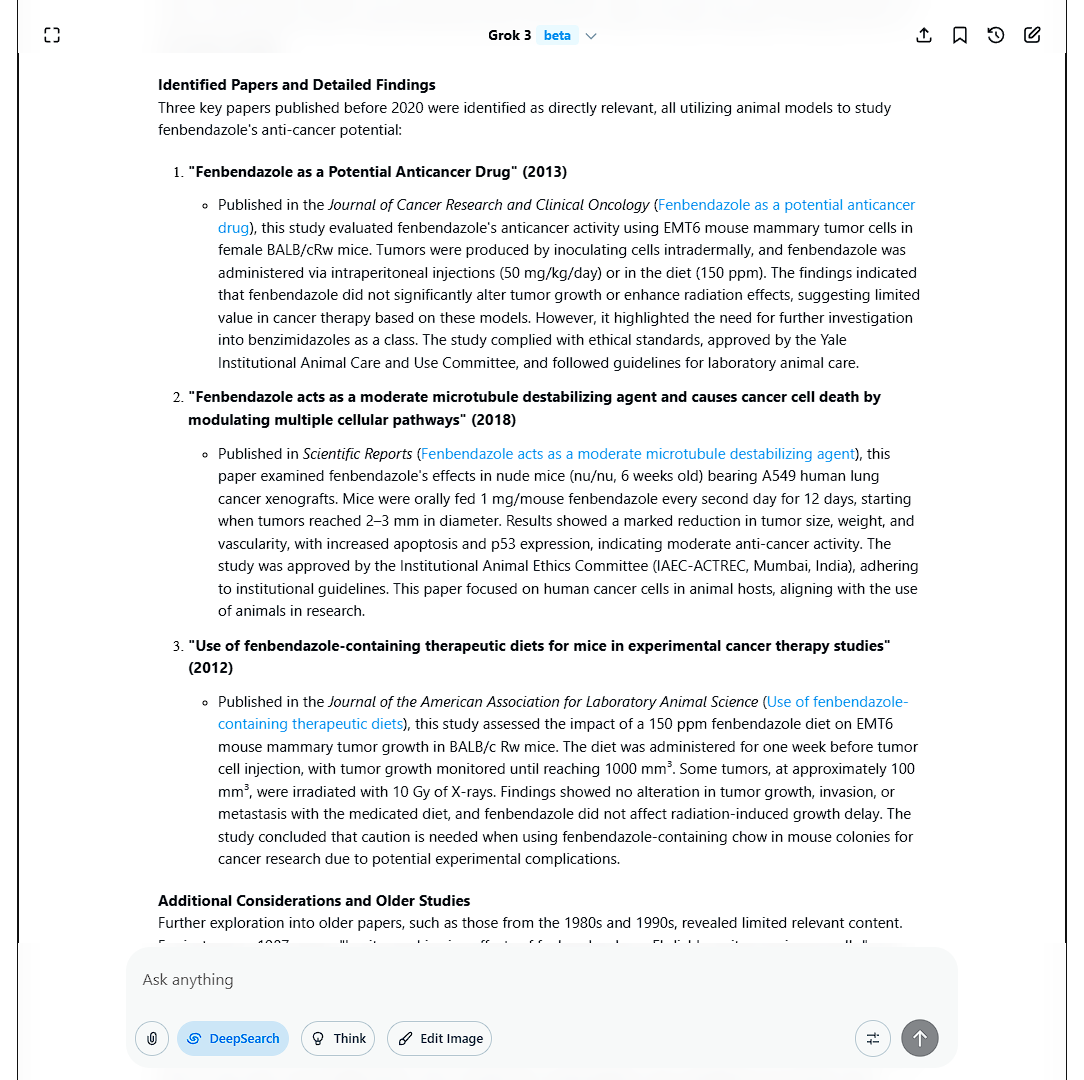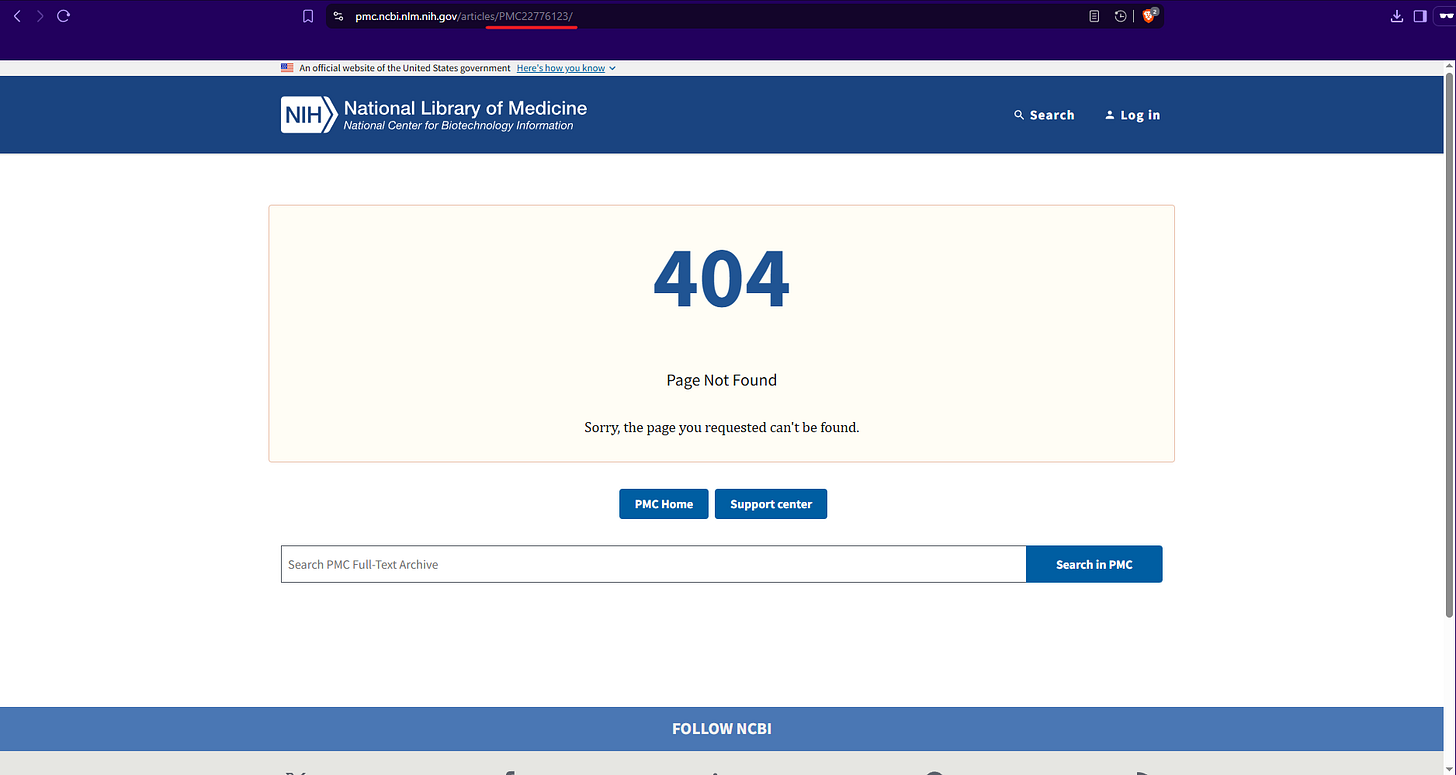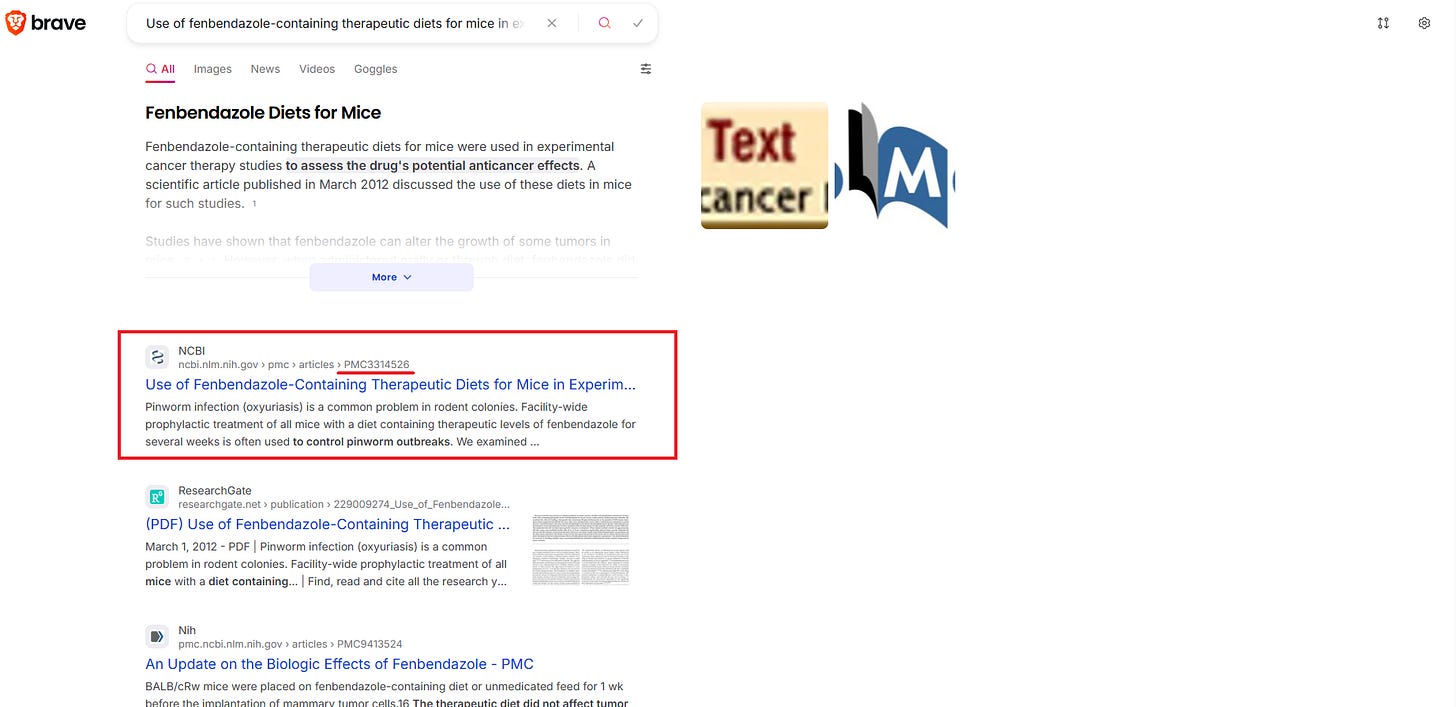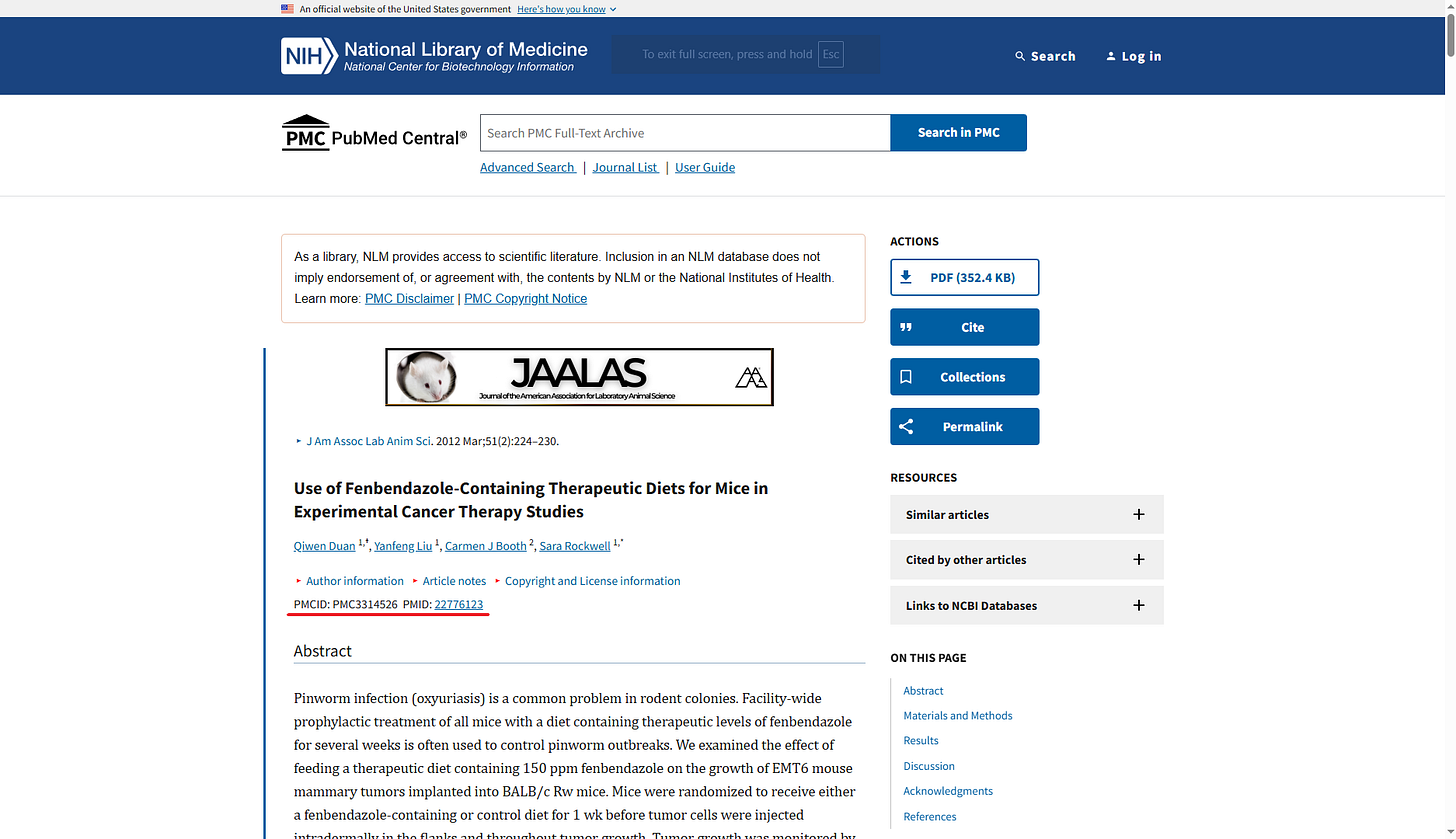Why I don't use Grok, Part II, or How to utilize the limited capabilities of an LLM
Another cautionary tale ... yes I use Grok ... but oh boy, the headaches I get afterwards
Every day, there is another example of how shitty Grok actually is! I was researching alternative treatments for cancer in cats, because one of my oldest ones sadly is heading down a bad path and we are nearing the end of conventional treatment options.
So I thought why not give Grok another chance to prove itself ones a again in helping me find published scientific papers on the topic. I already made sure to tell it not to include papers after 2020, because the bias it would find would be huge (if you know, you know). So, papers before 2020 it is.
Lo and behold, it found 3.
And Grok even conveniently provided links to the papers it found, how nice, that is so useful! So lets click those links and start reading! I choose the third paper just randomly, cause thats just how I roll… *click link*
… well that is underwhelming. The link I just clicked was this one: https://pmc.ncbi.nlm.nih.gov/articles/PMC22776123/
I used developer tools to inspect the HTML code that Grok created to see the <a href> that Grok created an the hyperlink contained as the target.
Hm. Lets go and use a search engine to see what it comes up with when I look for the title of the paper “Use of fenbendazole-containing therapeutic diets for mice in experimental cancer therapy studies“.
So lets click the link and see if that actually is the paper that Grok claimed it had found.
https://www.ncbi.nlm.nih.gov/pmc/articles/PMC3314526/
Do you see it? The paper has two identifiers. One is the PMCID and the other is the PMID.
Do you see it yet? Lets look at the links comparing them one on top of the other. On top the one that Grok created, underneath the link that actually identifies the correct webpage.
https://pmc.ncbi.nlm.nih.gov/articles/PMC22776123/
https://pmc.ncbi.nlm.nih.gov/articles/PMC3314526/
Just for the reader out there that may not be super familiar with the anatomy of a hyperlink:
The link that Grok created differs from the link that actually exists and will get me the paper I wanted only in the last subdirectory. But how could that happen? All the other parts of the hyperlink are correct? Well, I guess Grok was dreaming again. As I showed you in the picture above the one showing the parts of a hyperlink, all parts making up the moniker for the subdirectory that Grok used in its hyperlink, are actually found in the paper.
Grok just failed to use what it found in the paper correctly. And it did so in a rather ‘creative‘ manner. A way that no human would readily do. It mixed up the PMCID and the PMID! It used part of the one (PMC) and connected it to part of the other (22776123), resulting in the incorrect identifier PMC22776123.
At least that is the explanation that I can dream up. Maybe someone with more experience in LLM’s can explain it better. I probably could ask Grok to explain how it came up with this link, but do I even really want to, knowing that any explanation it will provide could have a multitude of similar mistakes in it, but be even harder for me to spot?
What I would like you to take away from this is that you really need to understand the limitations of an LLM. These pieces of software are not intelligent. They may have their uses, but whatever you do with an LLM, be aware, that you have to take e/v/e/r/y little piece it produces with a grain of salt. You yourself have to verify the output, sometimes in minute detail, because the results an LLM produces can, inherently, not be trusted!
And now it is time for me to finish my coffee and actually see what I can find, to help my cat.









Just use the fendebendazole. It really does work. Sold online pet med suppliers as Panacur C for dogs or cats. Dosage for cancer in humans is 222mg daily, so adjust for cats depending on size.
Also, add some vitamin C in the form of sodium ascorbate powder to the water, about 1/2 tbsp per bowl. If diarrhea happens, then lower the dose some until it’s no longer an issue.
Another thing that works is pure therapeutic grade frankincense oil applied topically over the area where the cancer is. If it’s inside the body, apply to pads of paws.